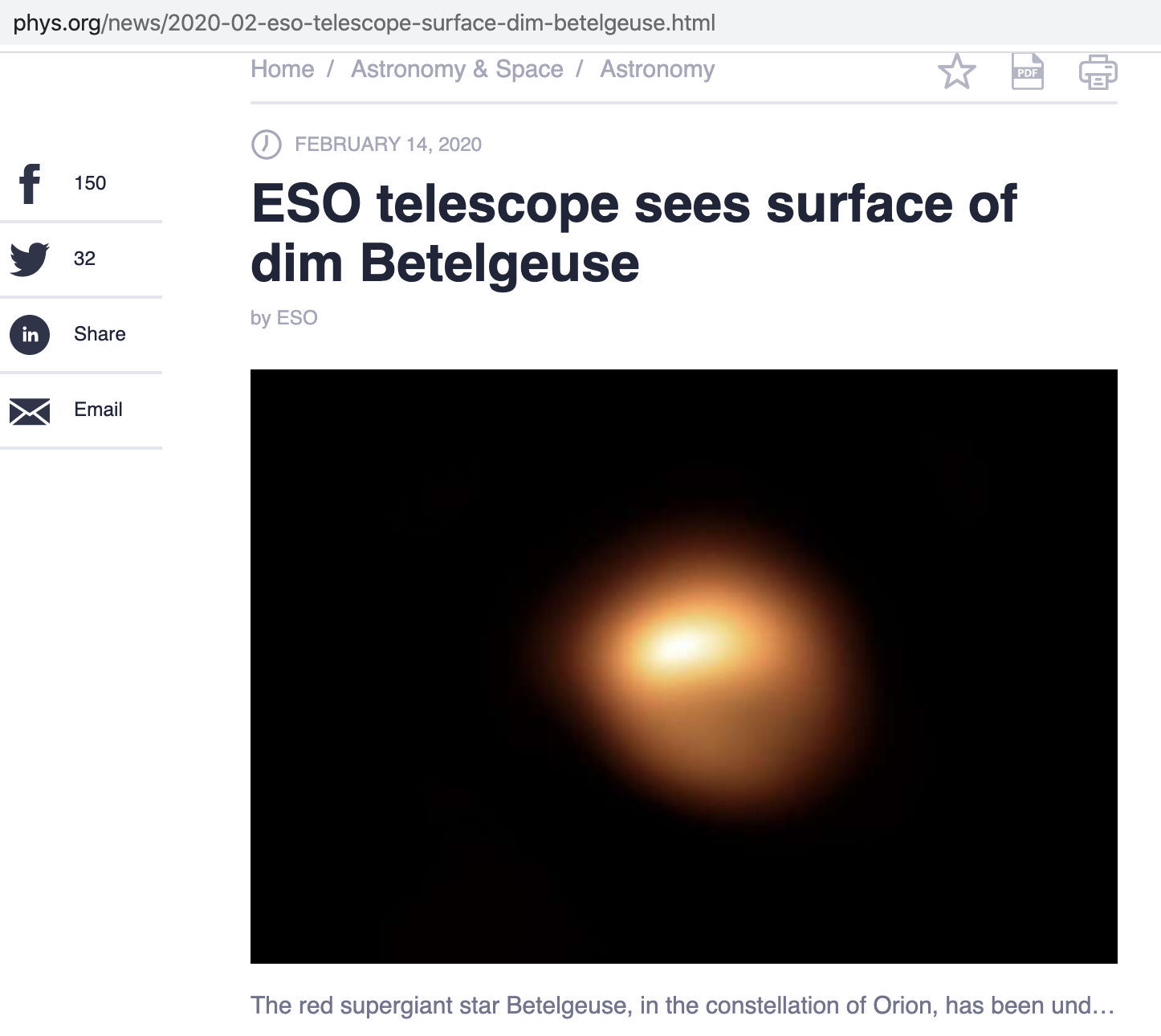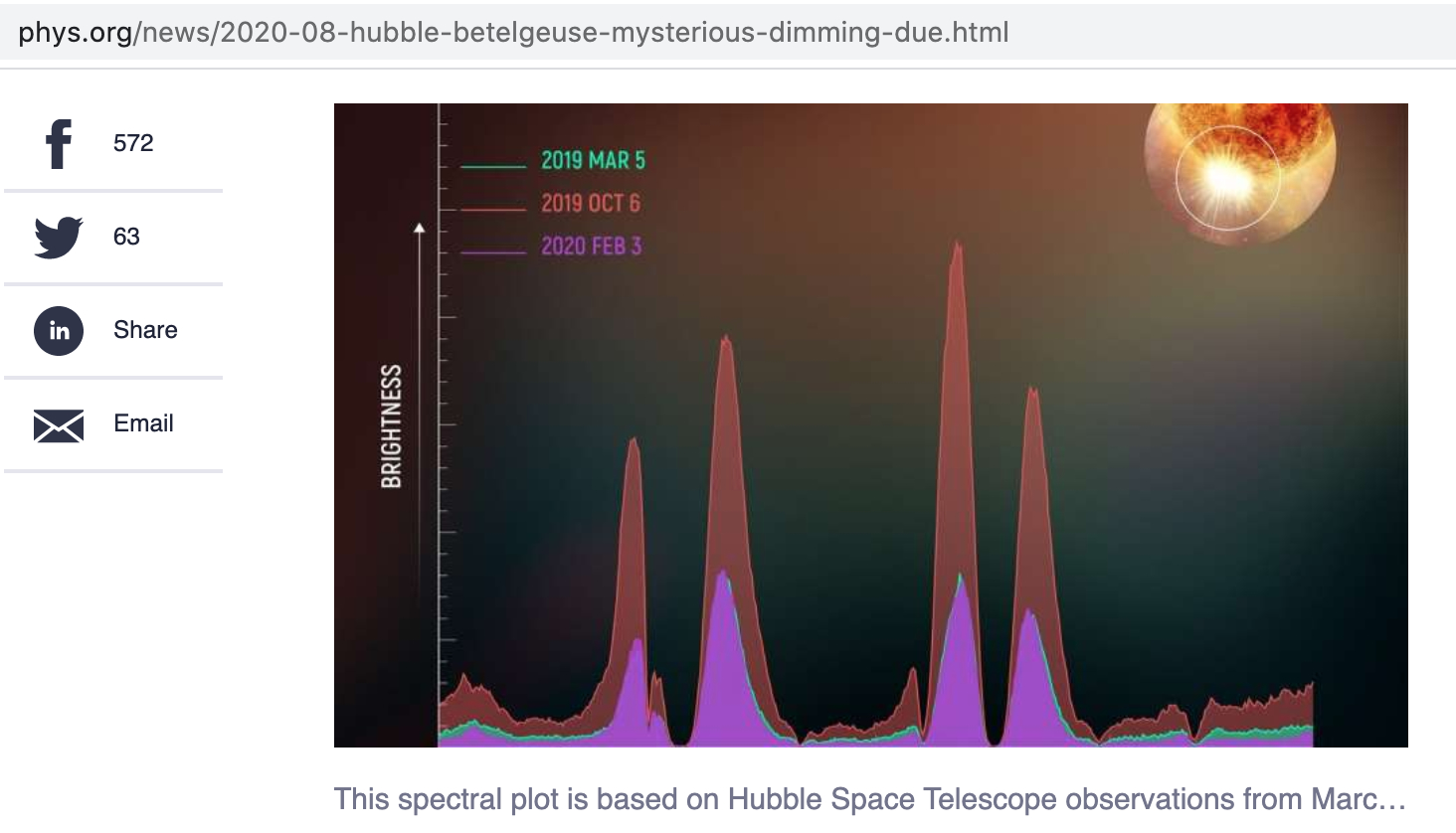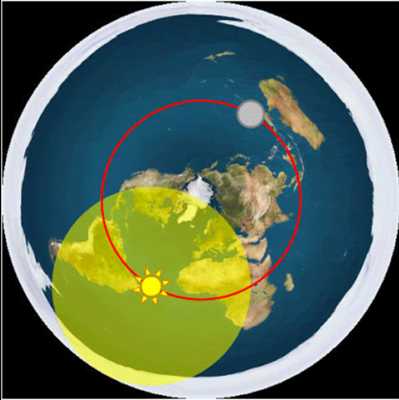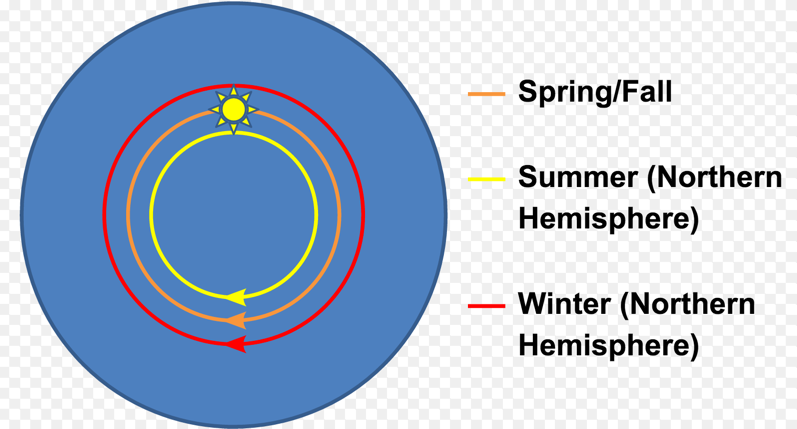Flat Earth NOT - ESO telescope sees surface of dim Betelgeuse
ESO telescope sees surface of dim Betelgeuse
https://phys.org/news/2020-02-eso-telescope-surface-dim-betelgeuse.html
Flat Earth advocates. Please explain why this "light in the sky" has dimmed 36%. Is Betelgeuse no longer favored by your Creator?

From the article ...
Using ESO's Very Large Telescope (VLT), astronomers have captured the unprecedented dimming of Betelgeuse, a red supergiant star in the constellation of Orion. The stunning new images of the star's surface show not only the fading red supergiant but also how its apparent shape is changing.
Betelgeuse has been a beacon in the night sky for stellar observers but it began to dim late last year. At the time of writing Betelgeuse is at about 36% of its normal brightness, a change noticeable even to the naked eye. Astronomy enthusiasts and scientists alike were excitedly hoping to find out more about this unprecedented dimming.
A team led by Miguel Montargès, an astronomer at KU Leuven in Belgium, has been observing the star with ESO's Very Large Telescope since December, aiming to understand why it's becoming fainter. Among the first observations to come out of their campaign is a stunning new image of Betelgeuse's surface, taken late last year with the SPHERE instrument.
The team also happened to observe the star with SPHERE in January 2019, before it began to dim, giving us a before-and-after picture of Betelgeuse. Taken in visible light, the images highlight the changes occurring to the star both in brightness and in apparent shape.
Many astronomy enthusiasts wondered if Betelgeuse's dimming meant it was about to explode. Like all red supergiants, Betelgeuse will one day go supernova, but astronomers don't think this is happening now. They have other hypotheses to explain what exactly is causing the shift in shape and brightness seen in the SPHERE images. "The two scenarios we are working on are a cooling of the surface due to exceptional stellar activity or dust ejection towards us," says Montargès. "Of course, our knowledge of red supergiants remains incomplete, and this is still a work in progress, so a surprise can still happen."
... etc.
- - -
Hubble finds that Betelgeuse's mysterious dimming is due to a traumatic outburst, by phys.org/news

Excerpt:
Recent observations of Betelgeuse have revealed that the star's unexpected and significant dimming periods in late 2019 and early 2020 were most likely caused by the ejection and cooling of dense hot gases, and that the star may be going through another dimming period more than a year early.
Between October and November 2019, Hubble Space Telescope observed dense, heated material moving outward through the star's extended atmosphere at 200,000 miles per hour. The following month, several ground-based telescopes observed a decrease in brightness in Betelgeuse's southern hemisphere, as if something was blocking light in this region of the star. By February 2020, the star had lost more than two-thirds of its brilliance, a dimming visible even to the naked eye, creating buzz that the star might be going supernova. Continued ultraviolet light spectroscopic observations with Hubble provided a timeline for researchers to follow, like breadcrumbs leading back through time to pinpoint the source of the mysterious dimming.
"With Hubble, we had previously observed hot convection cells on the surface of Betelgeuse and in the fall of 2019 we discovered a large amount of dense hot gas moving outwards through Betelgeuse's extended atmosphere. We think this gas cooled down millions of miles outside the star to form the dust that blocked the southern part of the star imaged in January and February," said Andrea Dupree, associate director of the Center for Astrophysics | Harvard & Smithsonian, and lead author on the study. "The material was two to four times more luminous than the star's normal brightness. And then, about a month later the south part of Betelgeuse dimmed conspicuously as the star grew fainter. We think it possible that a dark cloud resulted from the outflow that Hubble detected. Only Hubble gives us this evidence that led up to the dimming."
(Please read this full article at the URL posted above)
-
Mystery of Betelgeuse's dip in brightness solve (phys.org)
Excerpt:
When Betelgeuse, a bright orange star in the constellation of Orion, became visibly darker in late 2019 and early 2020, the astronomy community was puzzled. A team of astronomers have now published new images of the star's surface, taken using the European Southern Observatory's Very Large Telescope (ESO's VLT), that clearly show how its brightness changed. The new research reveals that the star was partially concealed by a cloud of dust, a discovery that solves the mystery of the Great Dimming of Betelgeuse.
(Please read the article posted at the URL above)
- -
Published on – February 16, 2020
Discussion at - https://www.youtube.com/channel/UC7ipUKERU0tzYFxALJBli4A/discussion
Our home page all articles - http://flatearthlunacy.com
kind regards, JonahTheScientist







